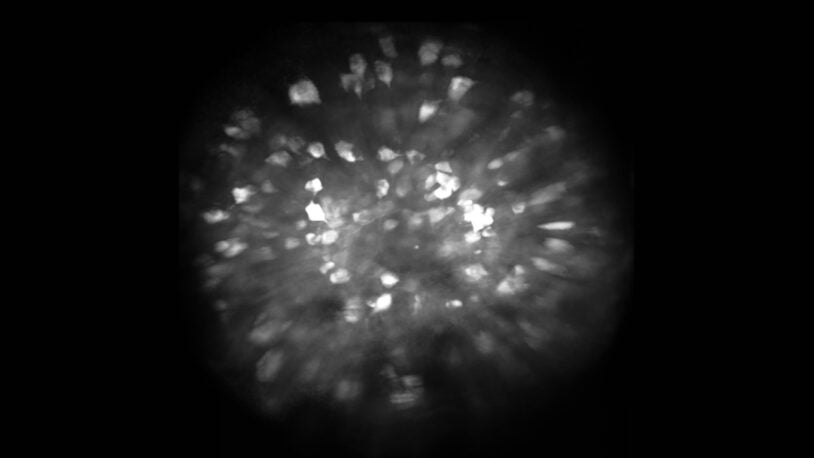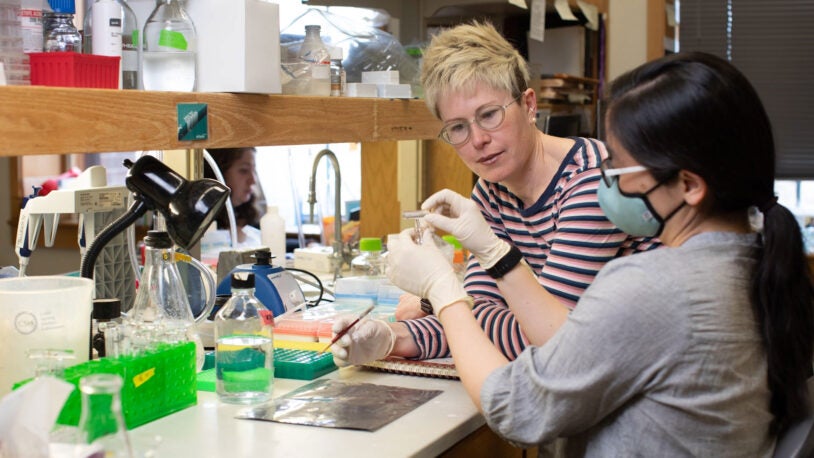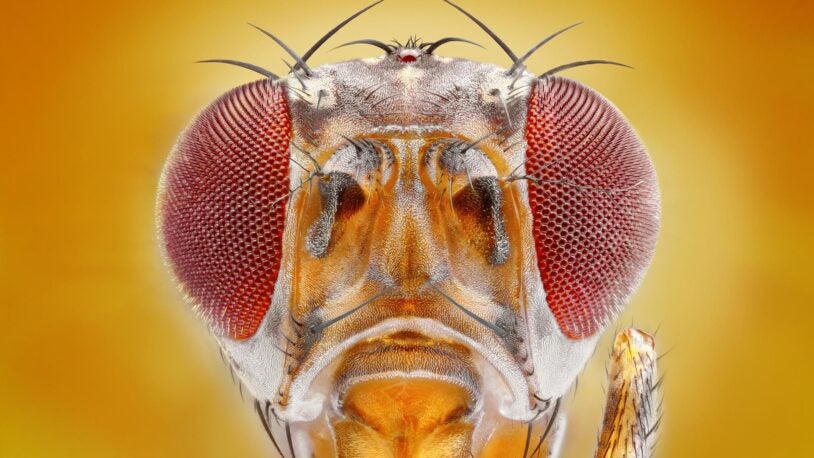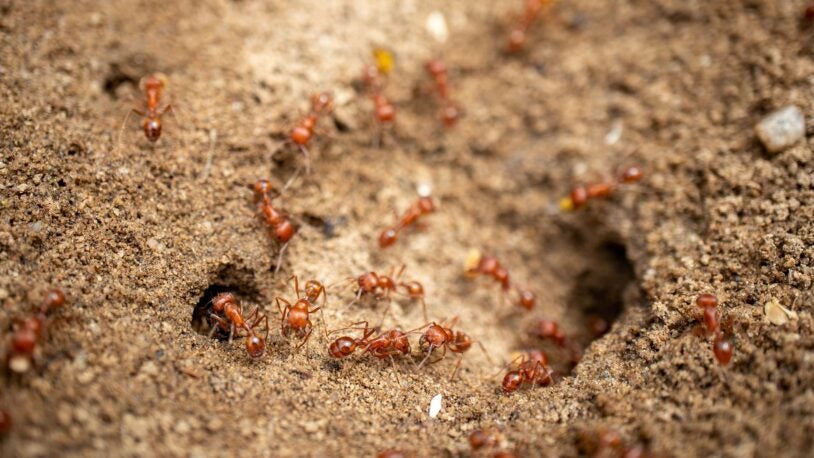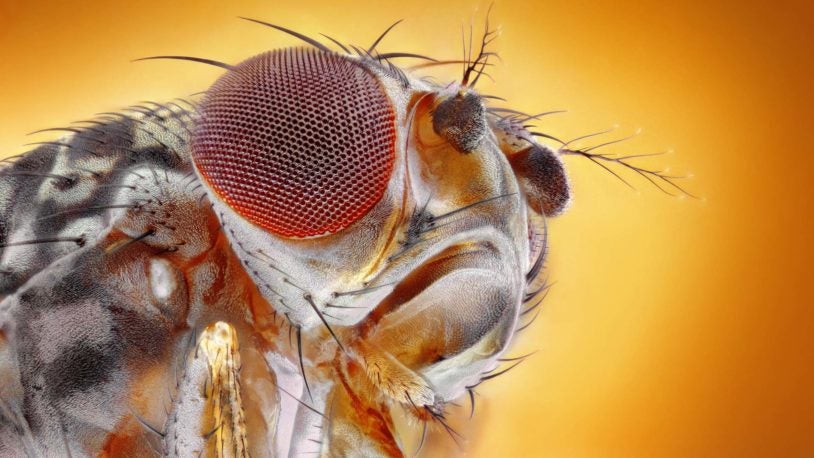
Saket Navlakha
Associate Professor
Ph.D., University of Maryland College Park, 2011
navlakha@cshl.edu | 516-367-5540
Biological systems must solve problems to survive, and their solutions can be viewed as “algorithms.” Our goal is to uncover these algorithms, translate them to improve computer science, and use them to spark new hypotheses about biological function and dysfunction.
Saket Navlakha’s lab studies “algorithms in nature,” i.e., how collections of molecules, cells, and organisms process information and solve interesting computational problems critical for survival. Indeed, there are many shared goals and constraints faced by biological and engineered systems, including: (1) the use of distributed networks as a backbone for information processing and communication; (2) trade-offs between optimization criteria, including efficiency, robustness, and adaptability; and (3) the need to develop low-cost, scalable solutions that conserve important metabolic or physical resources. An algorithmic perspective on biological problem-solving can lead to two ends: (1) new biological algorithms that are simple, flexible, and robust for use in computer science applications, and (2) quantitative frameworks to predict behavior, raise testable hypotheses, and guide experiments. Our lab has most recently focused on studying neural circuit computation and plant architecture optimization from this perspective.
NSF CAREER Award (2019)
Pew Biomedical Scholar (2018)
Keynote speaker at NIPS (2016)
Smells like learning
October 31, 2023
CSHL research suggests certain neurons help us tell apart different smells while others help us learn to distinguish between similar odors.
Can you outsmart this AI quiz?
February 6, 2023
Think you’re plugged into the latest artificial intelligence advancements? Test your tech knowledge with this quiz on AI and computational biology.
Cold Spring Harbor Laboratory: Foundations for the Future
December 15, 2022
CSHL continues to lead in biomedical sciences by fostering a collaborative, innovative, and high-risk, high-reward research community.
Even fruit flies count
October 25, 2022
Fruit flies know if they’ve smelled an odor once, twice, many times, or never before.
Deciphering algorithms used by ants and the Internet
March 1, 2022
Researchers discovered the same optimization algorithm used by Internet engineers is used by ants when they forage for food.
How a bad day at work led to better COVID predictions
May 3, 2021
A CSHL computer scientist and an MSK infectious disease physician developed a method for predicting COVID-19 severity in cancer patients.
How to tune out common odors and focus on important ones
May 11, 2020
The fly brain uses a simple computing trick to ignore prevalent odors and focus on newer but rarer odorants.
What Google could learn from a fruit fly
January 21, 2020
By tapping into life’s algorithms, scientists are finding elegant solutions to some of the hardest problems in computer science.
Saket Navlakha taps the power of biology and computers
December 17, 2019
Associate Professor Saket Navlakha is bringing ideas about “algorithms in nature” to the Simons Center for Quantitative Biology.
Machine learning helps plant science turn over a new leaf
To detect new odors, fruit fly brains improve on a well-known computer algorithm
Fruit fly brains inform search engines of the future
How plant architectures mimic subway networks
How plants grow like human brains
All Publications
BATMAN: Improved T cell receptor cross-reactivity prediction benchmarked on a comprehensive mutational scan database
25 Jan 2024 | bioRxiv
Banerjee, Amitava, Pattinson, David, Wincek, Cornelia, Bunk, Paul, Chapin, Sarah, Navlakha, Saket, Meyer, Hannah
Effects of stochastic coding on olfactory discrimination in flies and mice
Oct 2023 | PLoS Biology | 21(10):e3002206
Srinivasan, Shyam, Daste, Simon, Modi, Mehrab, Turner, Glenn, Fleischmann, Alexander, Navlakha, Saket, Benton, Richard
Reducing Catastrophic Forgetting With Associative Learning: A Lesson From Fruit Flies
19 Sep 2023 | Neural Computation | :1-23
Shen, Yang, Dasgupta, Sanjoy, Navlakha, Saket
A neural theory for counting memories
10 Oct 2022 | Nature Communications | 13(1):5961
Dasgupta, Sanjoy, Hattori, Daisuke, Navlakha, Saket
Special Issue: Biological Distributed Algorithms 2021
7 Apr 2022 | Journal of Computational Biology | 29(4):305
Emek, Yuval, Navlakha, Saket
A feedback control principle common to several biological and engineered systems
Mar 2022 | Journal of the Royal Society Interface | 19(188):20210711
Suen, Jonathan, Navlakha, Saket
Neural network features distinguish chemosensory stimuli in Caenorhabditis elegans
9 Nov 2021 | PLoS Computational Biology | 17(11):e1009591
How, Javier, Navlakha, Saket, Chalasani, Sreekanth
Better tired than lost: Turtle ant trail networks favor coherence over short edges
21 Oct 2021 | PLoS Computational Biology | 17(10):e1009523
Chandrasekhar, Arjun, Marshall, James, Austin, Cortnea, Navlakha, Saket, Gordon, Deborah
Branch-pipe: Improving graph skeletonization around branch points in 3D point clouds
22 Sep 2021 | Remote Sensing | 13(19)
Ziamtsov, I, Faizi, K, Navlakha, S
A Correspondence between Normalization Strategies in Artificial and Biological Neural Networks.
30 Aug 2021 | Neural Computation | :1-25
Shen, Yang, Wang, Julia, Navlakha, Saket
